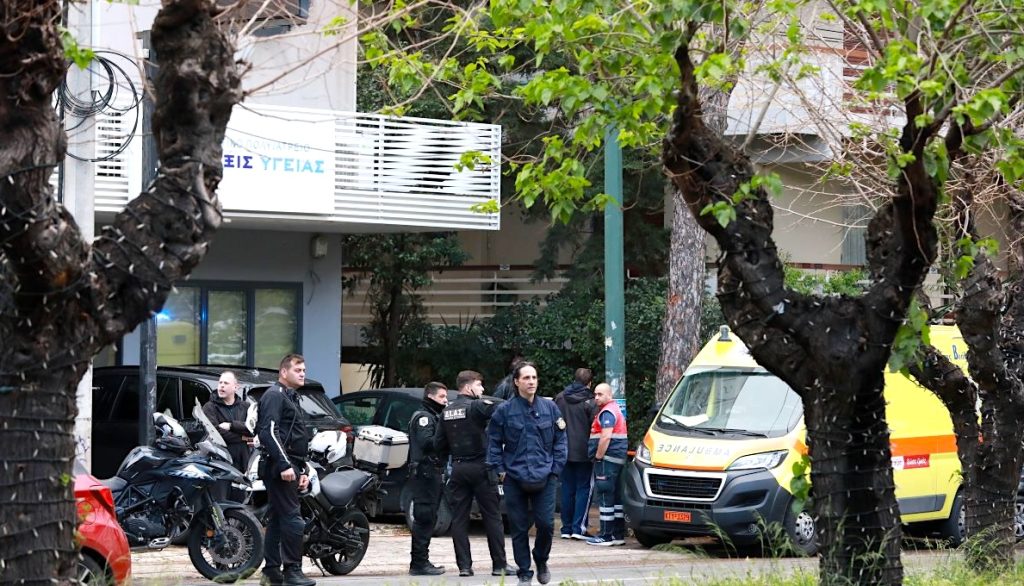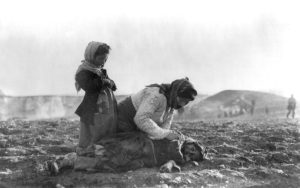NOT LONG AGO , I was out with a new friend when she leaned over our martinis to touch my lapel. “That jacket is fabulous ,” she sighed. “Tell me where you got it.”
Admittedly, the piece in question was quite smart—inky anthracite cashmere with ivory pinstripes and a tailored-yet-boxy cut that could pass for a recent offering from Saint Laurent. Yet, I paused. This particular pal’s handbag was worth more than my 2012 Toyota. Did she really want to hear that I’d foraged my “fabulous” jacket for $9 at the Waterbury, Conn., outpost of Red White & Blue Thrift?
As someone who’s been a devoted vintage-shopper since middle school (so…about 35 years), I’m used to this kind of exchange. Especially when the person asking is polished, professional and, shall we say, of a certain age. What starts as curiosity tends to give way to skepticism. Maybe it’s because they assume scouring vintage stores is a sport for the young and relatively penniless, who have endless hours to mine for gems. Or that most of what awaits is junk, marred by moth holes and frayed hems. “Great for you,” their eyebrows say. “Not for me.”
But what if I said it should be? There’s a reason scene-making celebs like Chloë Sevigny, Sarah Jessica Parker and A$AP Rocky—who have no shortage of cash and connections—are known for pairing runway scores with vintage pieces. Mixing secondhand finds with (new) investment items “can be a great way to tell your own little story,” said Jon Tietz, a New York stylist. Not incidentally, it can also save you a ton—and allay anxieties about accidentally twinning with a co-worker.
Most crucially, it needn’t be a slog. A handful of strategies are all browsers need to snag quality goods at brag-worthy rates. In the spirit of fashion generosity, I asked Tietz and other champion clothes-hunters their tips for dipping into the world of vintage savvily and stylishly. Here, a candid Q&A.
I don’t want to paw through miles of musty racks. What’s my move?
Good news for shoppers allergic to cracked linoleum and fluorescent lighting: Thanks to a proliferation of user-friendly online shopping platforms, there’s never been an easier time to get a vintage fix without visiting a thrift store. “ eBay is a trove and Etsy is great for vintage and handmade stuff,” said Harling Ross Anton, a former fashion editor who now pens a Substack newsletter, Gumshoe , in which she handpicks one-of-a-kind pieces.
For contemporary secondhand stuff, Poshmark is solid, while the RealReal excels at luxury finds. Sound too complicated? Consider Gem , an app that lets you search dozens of outlets via a single interface. Whichever avenue you choose, targeted keywords are a must. To narrow search results, “I always type in fabric and a pattern, like ‘100% silk polka-dot,’ ” said Anton.
Idiosyncratic prompts also yield more distinctive finds. Consider one of her recent scores: an oversized gold shell pendant on braided silk cord she found on Etsy by searching “vintage seashell necklace.” “I love that it feels contemporary, sort of in the mermaidcore vein,” she said. “Yet it’s also unique.”
Can I still snag good deals online?
Because the listings on sites like Etsy have already been curated by sellers, prices do tend to skew a bit higher than at, say, Goodwill. But everything’s relative. After daydreaming about a black distressed leather jacket to pair with a crisp white button-up, I recently took to eBay and clicked “buy it now” on a 1980s Banana Republic aviator design with a Debbie Harry-meets-Amelia Earhart appeal. (Older readers may recognize this as the era when the brand’s stores were lined with stuffed safari animals, not stretch-twill suits.) At $37 it was a remarkable value—light years beyond the quality of anything comparably priced from a modern fast-fashion label.
Old-fashioned haggling can work, too. Devin Wilde, a Brooklyn ceramicist who trolls eBay for workwear, “bargains like hell.” Among his biggest coups: a vintage Levi’s jacket lined with buffalo-check flannel. “It would have been at least $200 in a shop in Williamsburg, but I got it for $29,” he said. “You never know when someone is just going to want to get rid of something.”
What if I’m not into ‘retro’ looks?
Let’s let go of the idea that “vintage” necessarily means bell-bottoms and shoulder pads. Instead, whether shopping online or in stores, consider items that transcend trends, like Shetland sweaters, linen trousers and trench coats. There’s a reason stylists call such pieces “timeless.” Natural fibers invariably look more high-end than synthetics—and hold up better over time—so survey for tags that say 100% silk, cotton or wool, says Anton. To scan racks quickly I’ll often run my fingertips over hangers until I feel something that merits a stop.
When composing outfits, “it’s all about the mix” of old and new, said Tietz. Right now, he’s eyeing a pair of new suede moccasins by the Row. At about $1,000, they’re a hefty investment—but one he feels more comfortable making knowing he’ll wear them with vintage shirts that cost less than 20 bucks each.
Hasn’t the good stuff been picked over?
Though a tsunami of Shein castoffs has muddied the water, the vintage well is far from dry—if you know what to look for. One fount that might surprise Gen Xers who’ve logged some time at a food court: ’80s and ’90s items from midtier designers like Liz Claiborne and “mall brands’’ like the Gap, Benetton and Esprit . “People don’t think of them [as high-end], but the materials and construction were much better even then,” said Heather Goldberg, a seller who goes by the handle @thearrowdrifted on Instagram. She snaps up casual separates and graphic knits, especially when their labels say “Made in the U.S.A.” (Because the 1994 passage of Nafta helped usher in the era of cheap overseas production, those labels can also indicate age.)
I’ve filled my husband’s and son’s closets with vintage Brooks Brothers Oxfords and L.L. Bean chamois, while Tietz covets old Ralph Lauren cotton sweaters, and Anton has had great luck with Geoffrey Beene jackets—none of which are scarce. Some reliable favorites outside the all-American vein include Escada’s wool slacks and Louis Féraud’s riotously colorful silk blouses. (Want to bone up on what designer tags looked like in different eras? Check out resources like the Vintage Fashion Guild , whose website houses an extensive illustrated label archive.)
What’s the deal with sizing?
This one’s tricky. Vintage items generally run small. Often, the sizes on tags are effectively meaningless. “[For womenswear] my shorthand advice is to go two to three sizes up,” said Emma Zack, founder of Berriez , a boutique and retail platform that features plus-size vintage. To ensure a just-so fit, “know your measurements and carry a tape measure,” said Goldberg. Most responsible online sellers will list dimensions. Choosing more-forgiving styles can also help sidestep sizing woes. Zack seeks out bias-cut dresses. Other easy pieces include button-up shirts and maxi skirts.
Can old clothes still be on-trend?
Shopping vintage is actually among the best ways to keep up with fashion’s shifting winds without feeling like you need to sell a kidney (or that you’re contributing to landfill clutter). And because even premium pieces often cost less than new designer wares, it encourages experimentation: The stakes are lower. Want to flirt with boho camp shirts? Itching to jump on the colorblock bandwagon? Instead of dropping hundreds on a new Bode top or Fendi dress, get a similar style on eBay for the price of a pizza.
Plus, where do you think trends originate in the first place? As Tietz points out with a chuckle, designers are constantly revisiting the “archives.” Why shouldn’t we, too?
Thrifty Business
One sunny morning a few weeks back, the author and Off Duty’s fashion editor drove to Paterson, N.J., to visit Red White & Blue Thrift , a vintage emporium with stores nationwide.
Their goal? To put together two stylish outfits, one men’s, one women’s. Their means? Sixty minutes, $60 per look—and one massive shopping cart. Spoiler alert: They found a Loro Piana blazer for $9.75.



